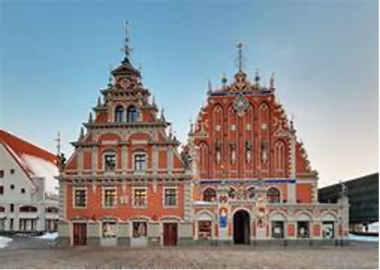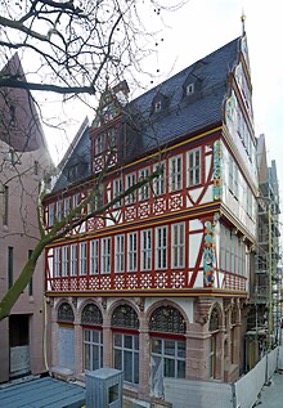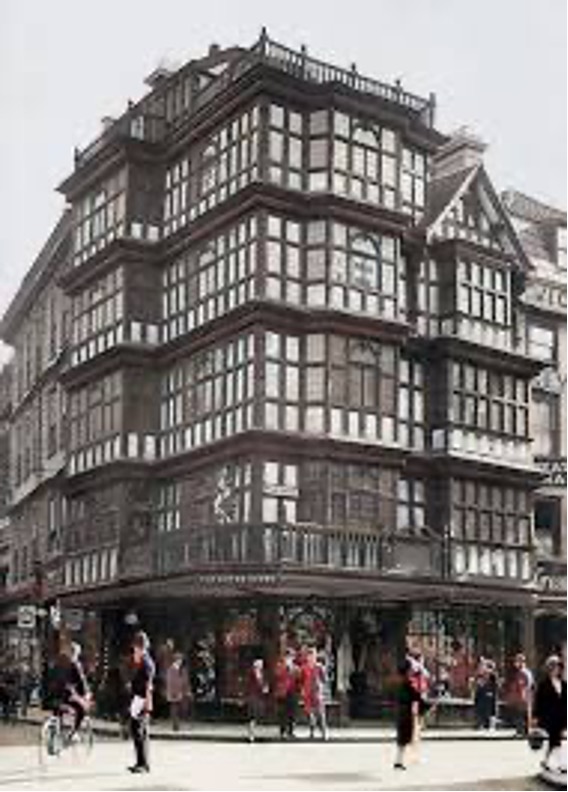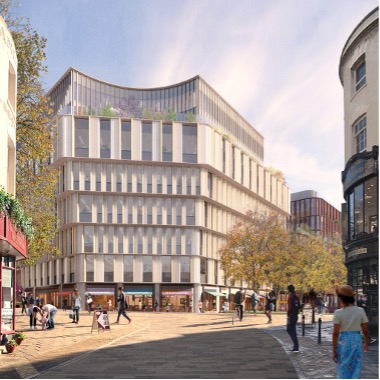Rebuild, copy or destroy – how should we deal with our cities’ history?

Let me start this article with a question. What is this building in the picture above’s age?
The answer depends on your perspective. The building is called The House of the Blackheads and is in Riga, Latvia. It was originally built in 1334 as a warehouse, while Riga was part of the Hanseatic League. During WW2, Latvia was first invaded by the Soviets after the Molotov-Ribbentrop Pact, then by the Germans and finally by the Soviets again. This led to widespread destruction and bombing in the old town. Post-war, the Soviets demolished the damaged House of Blackheads; they deemed it excessively German. After gaining independence, the Latvians rebuilt using a combination of Local Government funds and public donations. The modern replacement is, therefore, only 25 years old!
I was in Riga recently and suspect that many of the tourists taking photos wouldn’t realise it isn’t the original building.
Latvia isn’t the only country to complete this type of rebuilding project. Recently, Frankfurt in Germany took it a step further by rebuilding a whole city quarter. https://en.wikipedia.org/wiki/New_Frankfurt_Old_Town

In the UK, our approach has been very different. Rather than rebuild, post-war city planners saw WW2 destruction as a chance to rip up the fabric of our cities and replace with something shiny and modern.
I would recommend this blog about Exeter http://demolition-exeter.blogspot.com/2010/10/destruction-of-exeter-in-20th-century.html which shows that while the Blitz did real damage to the city, even more damage was done by the council (through pre-war slum clearances and post war demolition e.g. building a dual carriageway through the Roman city wall)
Similarly, post-war planners proposed to put a ring road through Christchurch Meadows in Oxford and were only stopped by opposition from the University and students.
Can we now fix the mistakes of the past? Many of the lost buildings were replaced in the 1950s and 1960s by brutalist or utilitarian designs and these are now showing their age.
Arguments for rebuilding
For me, the key argument is about restoring our link to the past. Most of our cities grew up in a piecemeal fashion, with older buildings in the centre and then newer suburbs as you move out. The destruction and post-war rebuilding tore the heart out of so many of our cities and swept away old street plans for boxy and ugly brutalism. Look at somewhere like Coventry, which was once described as England’s best-preserved medieval city and is now quite bleak.
Rebuilding would allow cities like Coventry to become attractive places for people to visit again. How many people would go there for the weekend?
In the 1990s, New York City fought crime by using the “broken windows” theory. This is the idea that if you leave broken windows and unfixed and you leave litter pile up that that encourages crime. I would turn this on its head – if we can make beautiful and liveable cities then maybe that can reduce crime and make our cities happier places for their citizens.
Finally, we should think about sustainability. Historic buildings are meant to last and restoring them could set the shape of our cities for potentially hundreds of years in the future. On the other hand, many of the brutalist buildings that were put up post war are already tired and being pulled down after only 70 years. What’s to say our modern glass buildings won’t also be torn down in 50-100 years?
Arguments against rebuilding
Perhaps the most powerful argument against rebuilding is that preserving the old allows no room for the new. The Great Fire of London in 1666 destroyed almost all of the city, including the medieval St Paul’s Cathedral, which, in an echo of Notre Dame, was covered in scaffolding at the time of the catastrophe. However, the destruction paved the way for Wren’s masterpiece of the new St Paul’s.
Another argument is that preserving too much of the past can be stultifying. Venice is a good example of this. It is almost perfectly preserved, but only has around 50,000 residents left. Many Venetians have moved across the lagoon to the more workaday towns of Mestre and Marghera. Arguably Venice now resembles more a museum than a living city.
The final argument we should mention is money. Councils in the UK are all hard up, so any rebuilding would need support from the private sector or wealthy donors. And can we justify spending money on restoring the past when essential services are struggling?
Going Dutch
A city where the rebuilding arguments are currently playing out is my home city of Bristol. The current symbols of the city are the Clifton Suspension Bridge and the SS Great Britain, but pre-war there was also another landmark called the Dutch House.
The Dutch House was a wooden framed merchant’s house that stood at the crossroads, which made up the very centre of Medieval Bristol. During World War II, Bristol was badly bombed and the whole city quarter where the shopping district stood was destroyed. This included the Dutch House.

The Dutch House, Bristol
Most of the quarter was turned into Castle Park. At the western end, 3 brutalist office blocks were constructed around the bombed-out ruins of St Mary Le Port Church. The site of the Dutch House itself is now a road that was widened (there were proposals to replace the Dutch House with road widening pre-war that were only stopped by the Mayor’s casting vote).
Fast forward 70 years and the office blocks are now empty and derelict. A developer has come forwards to demolish them and replace them with larger modern office blocks. The developer has made several arguments in favour of the scheme. These include:
- The new development will demolish the old buildings which are an eyesore and attract drug users.
- The development will restore the original pre-war street plan
- The development will allow restoration and maintenance of St Mary Le Port Church
- Some land will be added to Castle Park
Critics contend the development will overshadow the old city of Bristol, and that the architecture is bland (despite one of the buildings having overhanging stories to ape the Dutch House). And if you build this scheme, you lose the opportunity to put anything else on the site.

Proposed new development – Source:stmaryleport.co.uk
Unfortunately, like in most cases, it looks like money will win out in the end and planning permission was granted in 2021 (although, the work hasn’t actually started yet).
Gareth of the Vale